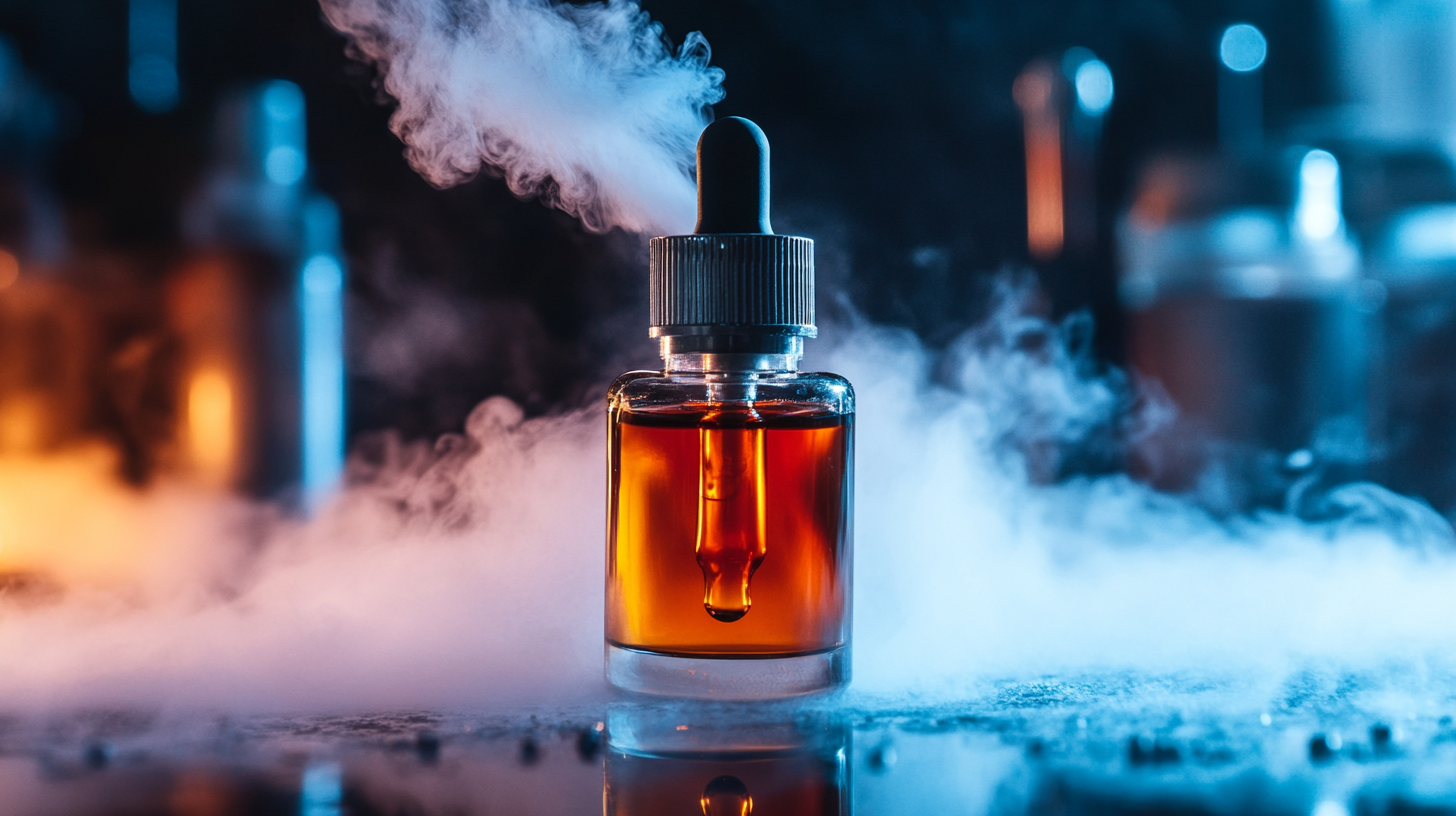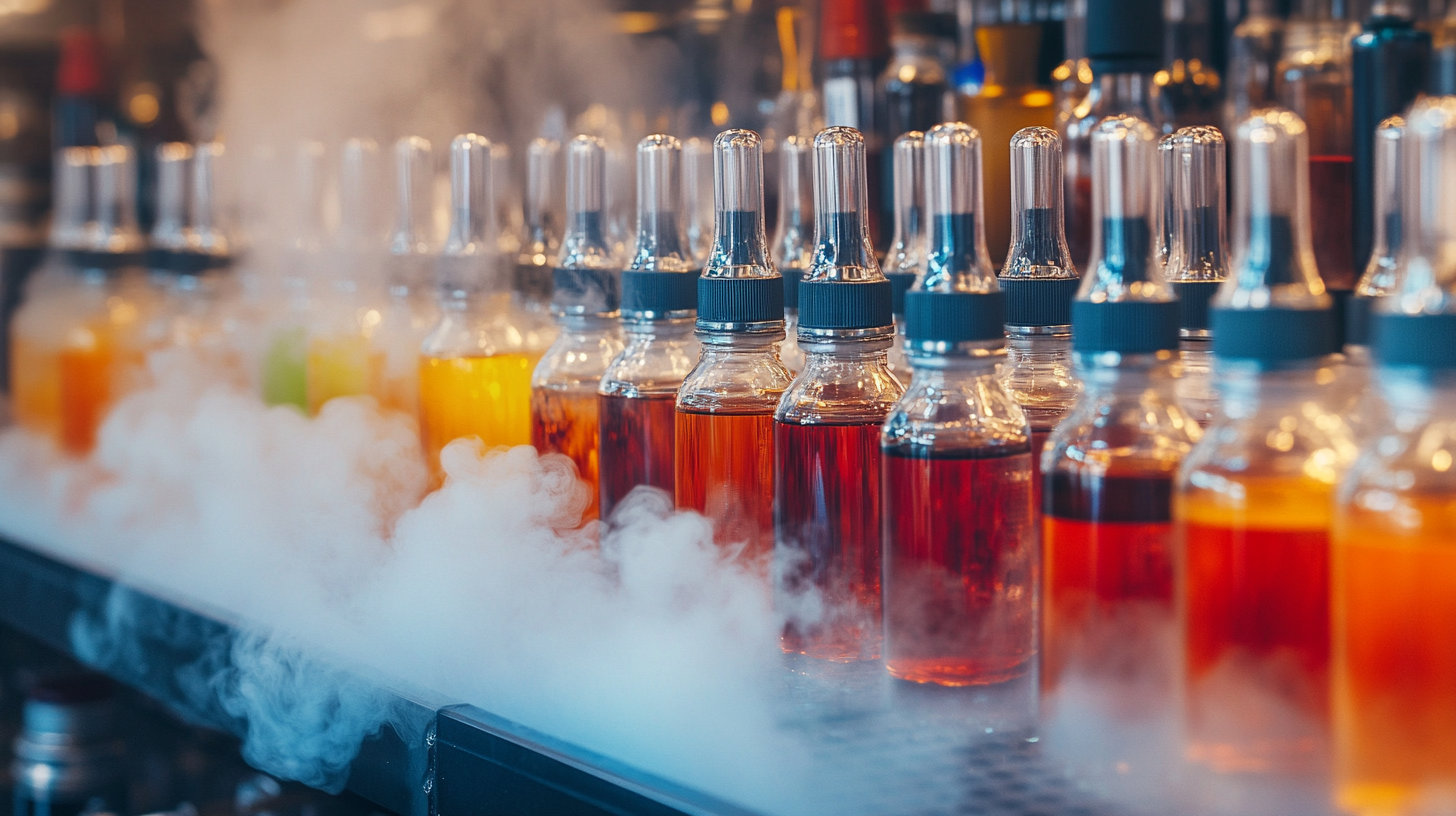In today's rapidly evolving global market, the demand for 0 Nicotine E-Juice is witnessing unprecedented growth, driven by health-conscious consumers seeking alternatives to traditional smoking. As regulations surrounding e-liquids become increasingly stringent, navigating export and import certifications has become crucial for manufacturers aiming to deliver high-quality products. This blog delves into the essential certifications and compliance requirements that manufacturers must satisfy to access diverse markets, highlighting China's role as a leading producer of premium 0 Nicotine E-Juice. By understanding the intricate landscape of regulations, businesses can effectively position themselves to meet consumer needs while ensuring safety and quality standards are upheld.

Join us as we explore the complexities of exporting and importing 0 Nicotine E-Juice, paving the way for brands to thrive in international markets.
When it comes to navigating the complexities of importing and exporting nicotine-free e-juices, understanding global regulations is crucial. Different countries have varying standards regarding the ingredients, packaging, and health claims associated with these products. For example, while some countries prioritize consumer safety and demand comprehensive lab testing before approval, others may have less stringent requirements. This discrepancy makes it essential for businesses to stay updated on international laws that govern e-juice trade.
**Tip:** Always research the specific regulations of target markets. Engage with local customs experts or legal advisors to ensure compliance and minimize the risk of delays or financial penalties.
Additionally, establishing strong relationships with certified suppliers can greatly enhance your exporting and importing process. Collaborating with businesses that possess the necessary certifications will not only expedite your entry into foreign markets but also bolster your product's credibility.
**Tip:** Secure certifications from recognized bodies and maintain thorough documentation to facilitate smoother transactions and inspections at customs.
By keeping these aspects in mind, businesses can effectively navigate the global landscape of nicotine-free e-juice trade and cater to a health-conscious consumer base.
Navigating the global market for 0 nicotine e-juice requires an understanding of the key certifications that ensure product safety and quality. As consumer preferences shift towards healthier alternatives, the demand for nicotine-free options has surged, leading to the necessity for stringent regulations across different regions. According to a report by Grand View Research, the global e-cigarette and vape market is projected to reach USD 67.31 billion by 2027, underscoring the importance of compliance with safety standards to maintain consumer trust.
In regions like Europe and North America, certifications such as the CE mark and ANSI/NCSL Z540.3 are critical. The CE mark indicates conformity with health, safety, and environmental protection standards for products sold within the European Economic Area. Similarly, in the United States, products must comply with FDA regulations, ensuring that all e-liquids undergo rigorous testing for harmful substances. A 2021 survey by the Consumer Advocates for Smoke-free Alternatives Association highlighted that 89% of consumers prefer products that have undergone third-party lab testing, further emphasizing the need for recognized certifications in enhancing product credibility and consumer confidence.
Additionally, emerging markets in Asia-Pacific are adapting their certification processes to meet global standards. Countries like Malaysia are implementing Good Manufacturing Practices (GMP) to regulate e-juice production, ensuring quality and safety. The push for certifications not only helps manufacturers access international markets but also protects consumers from potentially harmful products. As the industry evolves, understanding and complying with these key certifications will be essential for those looking to establish a foothold in the competitive world of 0 nicotine e-juice.
| Region | Key Certification | Issuing Authority | Description | Validity Period |
|---|---|---|---|---|
| North America | FDA Compliance | U.S. Food and Drug Administration | Ensures products meet safety and health standards. | N/A |
| European Union | Tobacco Products Directive (TPD) | European Commission | Regulates the sale and marketing of tobacco products, including e-liquids. | Every 5 years |
| Australia | Therapeutic Goods Administration (TGA) | Department of Health | Oversees the regulation of nicotine-containing products for consumption. | N/A |
| Canada | Health Canada Approval | Health Canada | Ensures e-juice products comply with health regulations. | 3 years |
| Japan | Ministry of Health, Labour and Welfare (MHLW) | Japanese Government | Regulates the safety and quality of vaping products. | N/A |
The global market for 0 nicotine e-juice has been experiencing significant growth, largely fueled by the rising awareness of health-conscious vaping alternatives. According to a recent report by Grand View Research, the global e-liquid market size was valued at USD 1.52 billion in 2022 and is expected to expand at a compound annual growth rate (CAGR) of 23.8% from 2023 to 2030. This surge is particularly evident in markets such as North America and Europe, where consumers are increasingly seeking products that offer flavor without the addictive effects of nicotine.
Additionally, the Asian market, particularly countries like Japan and South Korea, is also emerging as a notable player. The increasing shift towards vaping as a lifestyle choice has led to a booming demand for nicotine-free options. The vaping market in Japan, for example, has shown a substantial annual growth rate of approximately 15% over the past few years, as reported by Statista. With various flavors catering to diverse palates, businesses that invest in quality 0 nicotine e-juice can harness these trends and tap into new consumer segments that prioritize wellness and satisfaction in their vaping experience.
Navigating the certification process for e-juice manufacturers, particularly those producing 0 nicotine products, requires a keen understanding of global regulations and standards. According to the 2022 Market Research Report by Mordor Intelligence, the global e-liquid market is projected to grow at a CAGR of 18.3% from 2022 to 2027, highlighting the importance of compliance with stringent import and export certifications. To thrive in this competitive landscape, manufacturers must ensure their products meet both local and international safety and quality standards.
One essential tip for manufacturers is to familiarize themselves with the various certification requirements in target markets. For instance, the European Union’s Tobacco Products Directive (TPD) mandates that all e-liquids sold within its borders must undergo rigorous testing and include verified labeling. Additionally, companies should consider obtaining ISO certifications, which can significantly boost their credibility in foreign markets.
Another crucial aspect is staying updated on regulatory changes. Engaging with industry associations, attending trade shows, or subscribing to regulatory newsletters can provide valuable insights. Networking with other manufacturers who have successfully navigated the certification process can also facilitate knowledge exchange and help avoid common pitfalls. By prioritizing compliance and staying informed, e-juice manufacturers can better position themselves for global success.

The global e-juice market has witnessed significant growth, projected to reach USD 29.5 billion by 2025, with an increasing demand for 0 nicotine products. However, navigating the complexities of export certifications presents notable challenges for manufacturers. Compliance with varying regulations across countries is crucial. For instance, the European Union mandates that all e-liquids meet the Tobacco Products Directive (TPD) requirements, which include extensive labeling, product safety, and quality assurance measures. Manufacturers must allocate resources to understand and implement these regulations to avoid penalties and ensure market access.

Quality assurance is another critical aspect when exporting e-juice. A report from the World Health Organization indicates that nearly 70% of e-liquids contain unregulated ingredients, posing risks to consumers. To combat this, exporters must undergo rigorous testing and certification processes that align with international standards, such as those set by the International Organization for Standardization (ISO). These certifications not only ensure the safety and quality of the product but also facilitate smoother entry into foreign markets, enhancing consumer trust and brand reputation.
